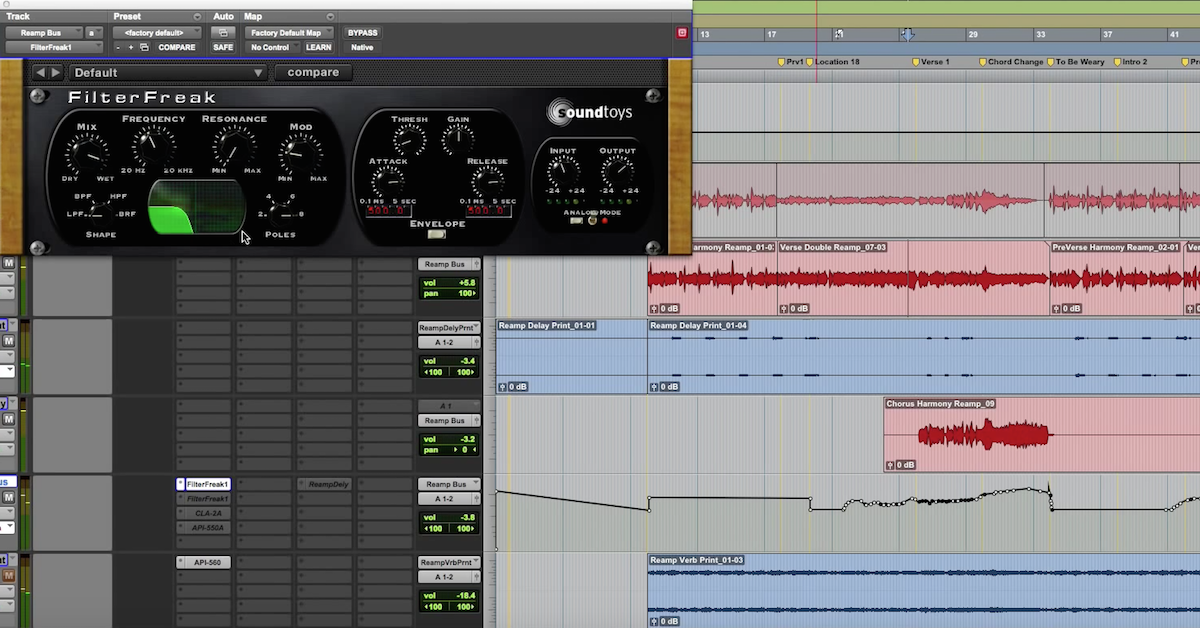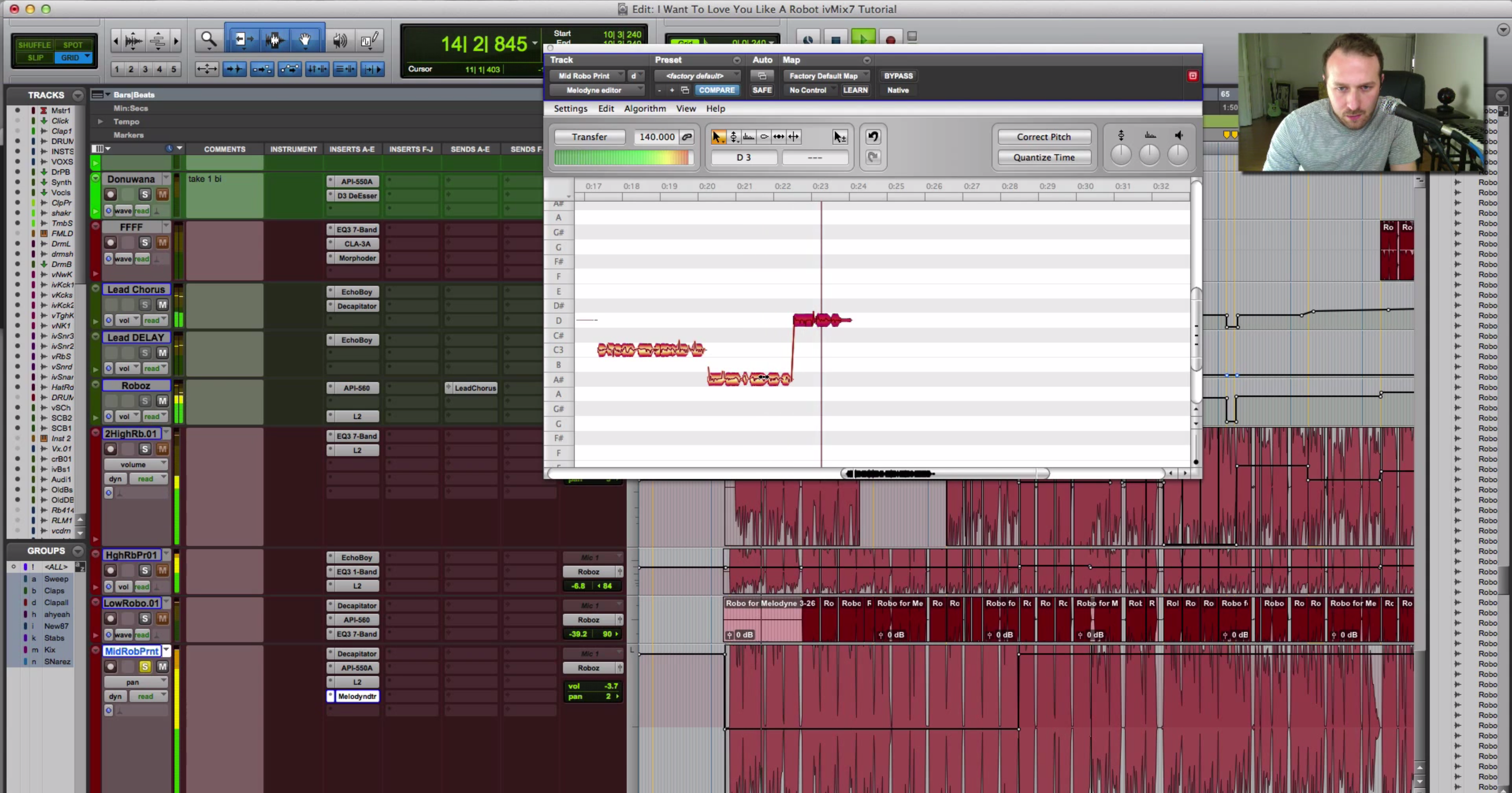7 Overused Music Production Buzzwords I’m Tired of Hearing
Article Content
You’ve heard it before, I’m sure: words matter. I personally am of the opinion that communication skills really are one of the biggest determining factors of success, not just in music but in general. We all rely on other people. Yes, really, there’s no escaping it. And being able to get your collaborators and clients to bring their best in the studio is very much dependent on how clearly you can communicate your vision in words.
I see a lot of audio and production terminology thrown around in ways that can be pretty lazy. In and of itself, I suppose that doesn’t matter too much. But if I use a certain term to describe a sound that I want from, say, a mastering engineer, I want to be sure that they understand just what I mean. Remember, it’s hard to get what you want when you don’t know how to ask for it.
With that in mind, here’s a list of what I consider to be a few of the worst offenders:
1. Warm
This is the mother of all music production terms that is used so often and to mean so many different things that it’s basically meaningless. Generally, when people use this term purposefully, they use it to mean “pleasantly mellow,” perhaps implying subdued high end. Usually, it implies a sound that is characteristic of vintage analog recordings and gear.
In the context of the currently insane market for vinyl records, however, I think “warmth” is used to explain the elusive quality that justifies spending $60 for a reissue copy of Rumors at a Whole Foods rather than just streaming it. Vinyl is just warmer! It’s the reason my $3 copy of Maggot Brain is apparently worth like 90 bucks now. No, I’m not selling it to you.
If a client tells me they want something to sound warmer, I have a mental inventory of mix moves I can use to make them happy. But if they’re able to use some more descriptive words than that, the chances I’m going to hit the mark on the first try are much, much higher.
2. Punchy
Admittedly, “punchy” is a term that I do use, and that I think has real meaning when used correctly. I use “punchy” to refer to any sound that has a pronounced attack, especially in proportion to sustain and ambience. Most commonly I’ll use it to describe drums, but I think it can be correctly applied to any sound that can have a pronounced attack. So, no, that accordion part is not a candidate for “punchiness,” but a bass could be.
That said, I hear this term being used as a catch-all stand in for “good” when referring to any instrument where “punchiness” sounds like it would be a desirable quality — especially drums. If you like the drum sound, it’s punchy. If not, it’s probably because it needs to be punchier! The same goes for bass.
The type of drums that I’d refer to first and foremost as punchy have a tight, controlled sound. Think 70s New York punk:
Contrast that with a song that has a much roomier drum tone:
Steve Albini is an engineer whose drum recordings I hold in very high regard. Would I call the drums on the song above punchy? Eh, punchy enough to sound strong in a mix… but it’s not the first word I’d use to describe them. I’d lead by talking about that room tone — the punchiness here is not the main story.
(By the way, this article by my colleague Thomas Brett has some great pointers for punchy drums.)
3. 3-D
Let me just start this one off by saying that I’m going to ignore the fact that sound exists in physical space, and is therefore inherently three-dimensional.
I’ve worked through notes with clients where they referred to something as sounding 3-D, or needing to be more 3-D, and more often than not I’ve known what they meant. 3-D could be seen as a stand in for the term “depth,” which I believe is a real, discernible phenomenon in music production.
That said, there are just far too many stupid message board posts to the effect of “audio plugins can’t sound 3-D.” I think more often than not these posts come from an amateur producer wondering out loud why their clipped-out sessions sound like garbage, but Dark Side of the Moon sounds great, and then concluding that the difference must be analog hardware.
Don’t get it twisted, DSOTM does sound pretty great. Groove on it for a second:
Ok, back to the article. Guess what? There are producers out there making great, “3-D” sounding music entirely in the box, as you read this. If you want to spend all of your disposable income on vintage gear that breaks all the time because you think it’s the missing ingredient that will turn your basement recording into sonic gold, be my guest. If you want to spend a couple hundred bucks that will actually help you get better mixes, treat your damn room.
4. Big/Bigger
I’m sorry, did you just mean to say “louder?” If there are any disgruntled composers of ad music reading this article, they will likely recognize the words I’m about to write as coming from a member of their own ranks.
Music feeling alternately bigger or smaller is real. You are not wrong to hear a song and say that some moments sound “bigger” than others. The problem is that “needs to feel bigger” is a note that anyone who has worked with corporate clients has surely gotten before, and it’s usually accompanied by a suggestion that some additional layer be added to the song in question.

Perspective, man…
As often as not, the composer will really have no business adding more parts to the piece. I personally have been asked more than once to go “bigger” with a track that was absolutely already stuffed to capacity with layers of sound.
Remember: size in music production is about context. You don’t have to make an instrument, a melody or a section actually be bigger in order for it to feel bigger. Making adjacent musical content feel smaller in order to change the listener’s sense of scale has the same impact, and often works much more efficiently.
If you’re an artist, a “creative” at an ad agency or a director asking for music to feel “bigger,” I’m not telling you you’re wrong for wanting that. Just don’t assume that the road to “bigger” always runs through “more.”
5. Organic
Let’s keep the ad composer lingo going for a moment, shall we? “Organic” is a term that comes up a lot in ad briefs, usually used to describe a reference track or a style for the piece being commissioned. Imagine this scenario:
You get an email from a music house with a link to a YouTube video of an “organic” reference track. You click play. The song opens with an acoustic guitar. Ok, sure, that’s “organic” enough. Yeah, it’s heavily edited and clearly a loop, but sure. Then a voice enters… what’s more organic than the human voice? Well, ok, it’s very obviously autotuned and processed, but I guess I still hear why this is “organic.” Then the beat drops, and a synth pad starts pumping with a sidechain compressor being triggered by an aggressive programmed kick. Wait, what about this is “organic” exactly?
Maybe that example is a tad extreme, but I received the following song as an “organic” reference point:
I don’t know where the person that sent it is hearing backwards guitars in nature without the help of drugs, but I’m taking my next vacation there. I like this song just fine, but “organic” isn’t the first word I’d use to describe it.
Obviously, context is everything. So much music is so transparently artificial (the product of soft synths, in the box processing and heavily manipulated audio) that certain instruments automatically come across as ultra natural even when they, too, are heavily edited and processed. That said, you can still go hear real humans performing music entirely on acoustic instruments, without a backing track even! In light of that fact, I don’t think it’s time to act like humanity has moved on to the musical equivalent of an all-Soylent diet just yet.
6. Experimental
“Experimentalism” in music seems to drift in and out of vogue every decade or so. For the most part, I’m here for it. Let’s get weird.
The problem with that term, “experimental,” is that it’s often used as a lazy stand-in for “kinda weird” in music PR lingo. I still see the term “experimental” applied to music made using synthesizers, tape loops, and manipulated samples. And, yeah, all of that was pretty experimental… in 1960.

Loosely based on the real John Cage
John Cage, a hugely influential figure in 20th century experimental music, put it very succinctly: “an experimental action is one the outcome of which is not foreseen.” If an “experimental” musician is onstage, performing their songs the same way, night after night, that doesn’t sound like an experiment to me. That sounds like pop music.
Look, if the term “experimental” helps the weird sound diggers suss out which sounds are the weirdest so they can go dig them, then I guess it’s serving a purpose. But the thing is, there are most certainly still people making genuinely experimental music by Cage’s definition, which I happen to think is a good one.
What’s wrong with just categorizing something as weird, kind of noisy pop music? I’d listen to that, and you don’t have to claim that it’s “experimental” to make me take it seriously.
7. Industry Standard
So, yes, there is (knock on wood) still an industry. And you know what? You could certainly say that it does maintain certain standards.
Outside of arguments about the relative merits of Pro Tools vs. other DAWs, though, there is really just one context in which I see the words “industry standard” being used: Instagram ads for budget recording studios, usually very obviously being run out of a practice space or the engineer’s mom’s basement.
Look, you’re reading the writing right now of a guy who has operated out of a practice space more than once in his life. Fortunately, those days are behind me! But I get it. And if right now you’re hustling out of a practice space or basement studio, I believe in the work you’re doing, and you should too.
But as I think back on all the times I’ve had to select a studio, either for myself or for a client, not once can I recall someone saying:
“Wait, hold on — does this studio have industry standard gear??”
Some pieces I often see accompanying the “industry standard” description are Universal Audio 610 preamps and Neumann U87 mics. A great pre and a great mic, no doubt about it. But are they going to be all that impressive to a client who really, really cares about gear? Eh, I don’t know about that. And for a potential client who doesn’t care about gear? Well, you already have your answer: they don’t care.
I promise, this is coming from a place of love and not disrespect: if the best thing you can say about your studio is that you feature a couple pieces of “industry standard” recording equipment, you’re going to need a better pitch than that. This is a competitive industry. Your mic doesn’t make great recordings — you do.
Conclusion
There you have it — a salty journey through the eye-rollingest pages of the music production dictionary. Will you catch me using these terms now and again? You bet. When I do, I always try to have a clear sense of what I mean by them. And when I need to elaborate, I try to find the language necessary to get my point across. If you’ve ever asked for a mix to sound “warmer” or “punchier” and have been disappointed with the result, try getting a little more specific. It just might pay off.










